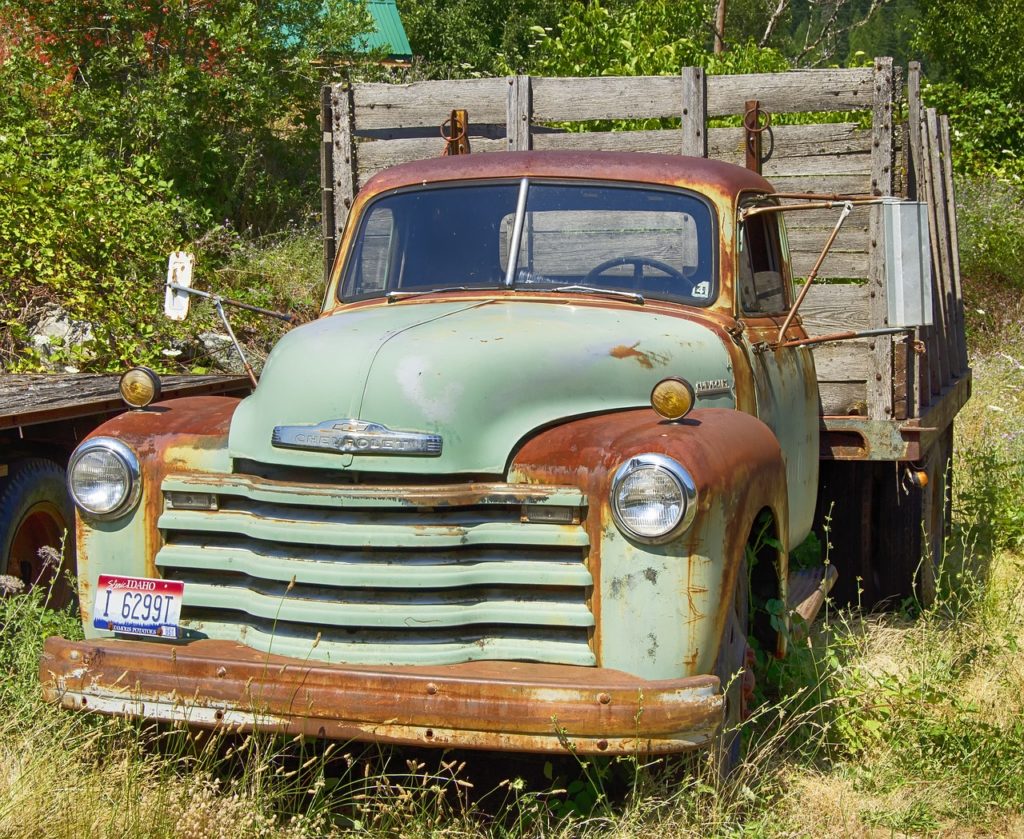This post may contain affiliate links which means I may receive a commission for purchases made through links.
The Very Beginning Of Ratrods

From the early years of the 1940’s, people have had to make their vehicles run and drive regardless of how they looked. with little or no money, people have had to make sure they had a car or a truck to either get to and from work or to move their goods to market. This generally happened by piece mealing their cars or trucks together with whatever they could find around the yard or local junkyard. This was generally looked down upon by the wealthy. The term ratrod and the creations of these vehicles done on purpose, became mainstream years later. You can find a book that gets more in depth of the history of ratrods here.
Ratrods Hit The Carshows
Early Days of Ratrods The term “rat rod” is believed to have originated in the mid 1980s, when a group of hot rodders in California began building cars with a raw and unfinished look. These early ratrods were typically built using parts salvaged from junkyards and scrap heaps, and they were intended to be driven hard and fast.
At the time, the ratrod movement was seen as a reaction to the highly polished and expensive hot rods that were popular in the 1980s. Ratrods were a way for car enthusiasts to express their individuality and creativity without breaking the bank.
The Evolution of Ratrods
As the ratrod movement grew in popularity, builders began to experiment with new styles and techniques. One trend that emerged was the “rat rod truck,” which combined the rugged look of a ratrod with the utility and functionality of a pickup truck.
Other builders started to incorporate more modern components into their ratrod builds, such as disc brakes, modern suspensions, and fuel injection systems. This allowed ratrods to become more reliable and better performing while still retaining their unique look and feel.
Current Day Ratrods
In the present day, ratrods have evolved even further. Many builders are now using high-tech fabrication techniques and cutting-edge materials to create one-of-a-kind ratrods that are unlike anything seen before.
At the same time, there is still a strong DIY ethos within the ratrod community, with many builders preferring to use salvaged parts and do as much of the work themselves as possible. This combination of old-school and new-school approaches has helped keep the ratrod movement fresh and relevant.
What We Know Now
Ratrods, as we know them, have come a long way since their early days in the 1940s. From their humble beginnings as a reaction to the hot rod scene of the time, they have evolved into a unique and beloved subculture within the custom car world.
Whether built with salvaged parts or cutting-edge materials, ratrods continue to capture the imagination of car enthusiasts around the world. Their raw and rugged appearance, combined with their DIY ethos, make them a symbol of creativity, individuality, and self-expression. But the real question is, what does the future hold for ratrods?
